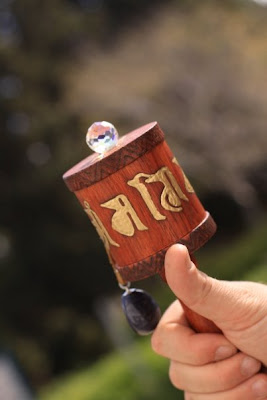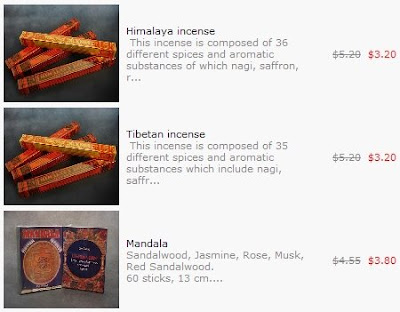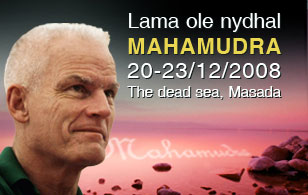Hand made
prayer wheels with reels of mantras from H.H. the Dalai Lama.

For centuries
prayer wheels have been used for praying, meditation, healing, purifying karma and protection from negativities. Some of the most advanced Buddhist Masters such as Padmasambhava, Marpa and Mahasiddhas such as Tilopa, Naropa and Nagarjuna used and distributed prayer wheels to benefit sentient beings and to protect the environment especially of sincere Dharma practitioners.
Turning a
prayer wheel creates extensive benefits for all beings because prayer wheels are the manifestation of the Chenrezig, Buddha of Compassion, holy speech. As a holy object, a prayer wheel has tremendous power to eliminate the self-cherishing mind that keeps us from realizing perfect bodhichitta and thus reaching enlightenment. By turning a
prayer wheel with a motivation of compassion for all beings and reciting the mantra OM MANI PEME HUNG you will accumulate extensive merit and purify obstacles.
"One of the Benefits of the
prayer wheel is that it embodies all the actions of the Buddhas and bodhisattvas of the ten directions. To benefit sentient beings, the Buddhas and bodhisattvas manifest in the prayer wheel to purify our negative karmas and obscurations, and to cause us to actualize the realizations of the path to enlightenment.
All beings (not only people but also insects) in the area where a
prayer wheel is built are saved from rebirth in the lower realms: they receive a deva or human body, or are born in a pure land of Buddha.
If you have a mani
prayer wheel in your house, your house is the same as the Potala, the pure land of the Compassion Buddha. If you have a
prayer wheel next to you when you die, you don't need phowa. Having the prayer wheel itself becomes a method to transfer your consciousness to a pure land. simply thinking of a
prayer wheel helps a dying person to shoot the consciousness up the central channel and through the crown to reincarnate in the pure land of Amitabha or the Compassion Buddha.
Simply touching a prayer wheel containing 100 million Om Mani Padme Hung mantras accumulates the same merit as having recited 100 million Om Mani Padme Hungs. Turning the prayer wheel once is the same as having done many years of retreat.
There are earth, water, fire and wind prayer wheels. With the water prayer wheel, the water that touches the wheel becomes blessed. When the water goes into an ocean or lake, it carries the power to purify all the billions of animals and insects there. A fire prayer wheel is turned by the heat if either a candle or electric light. The light that comes from a prayer wheel then purifies the negative karmas of the living beings it touches. It is similar with a prayer wheel turned by wind. The wind that touches that prayer wheel is blessed by the power of the prayer wheel and then has the power to purify the negative karmas and obscurations of any being it touches."
Lama Zopa Rinpoche “The person who turns this
prayer wheel which possesses OM MANI PEME HUNG will be blessed by all the gurus, the deities will grant realizations, those gone to bliss will pay attention to him or her, and the Dharma protectors will eliminate all obstacles.”
The Peerless Wish-Granting Jewel TantraGALGAMANI - Prayer Wheels Blog









 Details: http://www.buddhism.org.il/eng/mahamudra2008.html
Details: http://www.buddhism.org.il/eng/mahamudra2008.html


 Jigme Singye Wangchuck, who prefers evolution rather than revolution.
Jigme Singye Wangchuck, who prefers evolution rather than revolution.